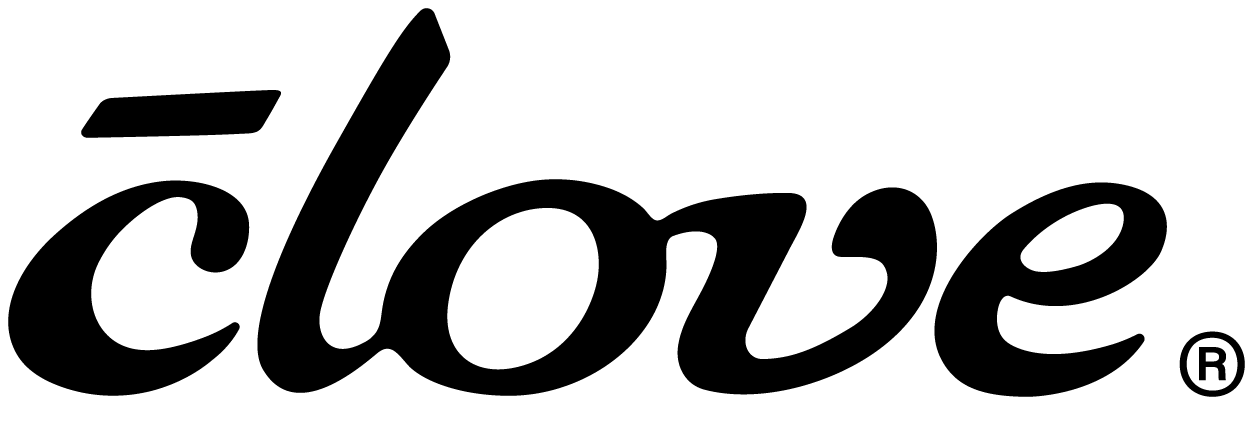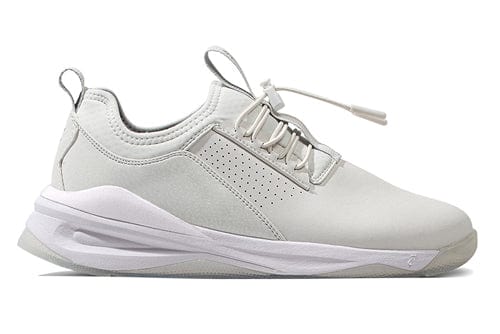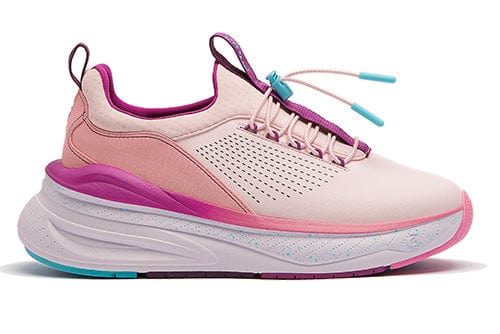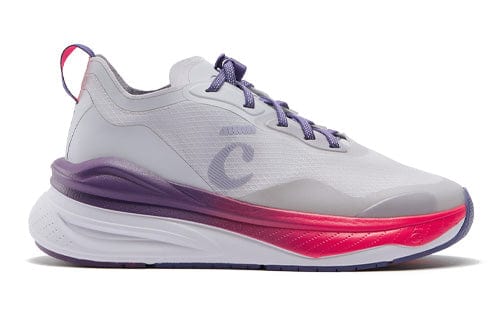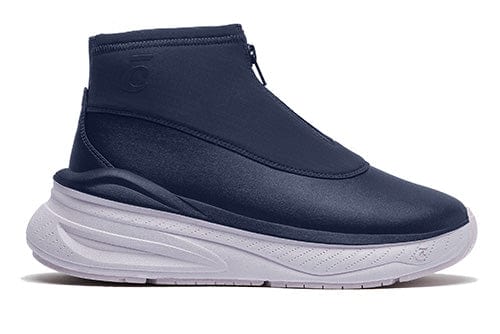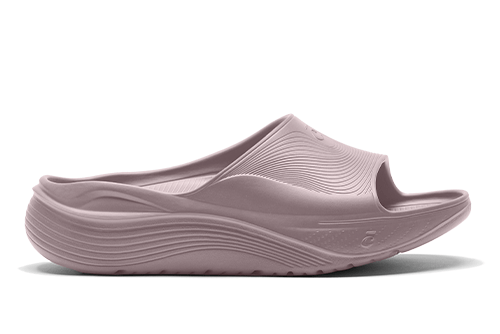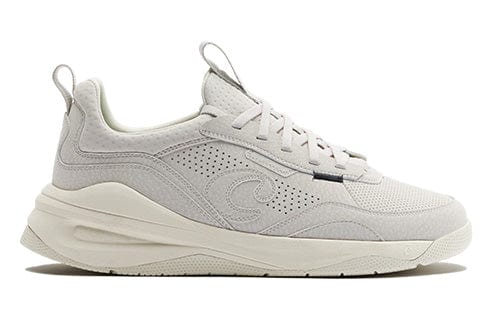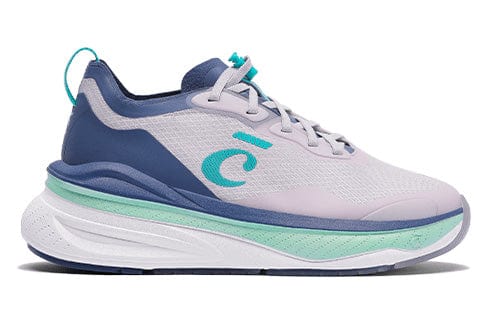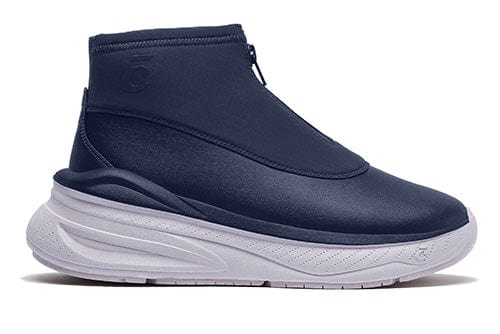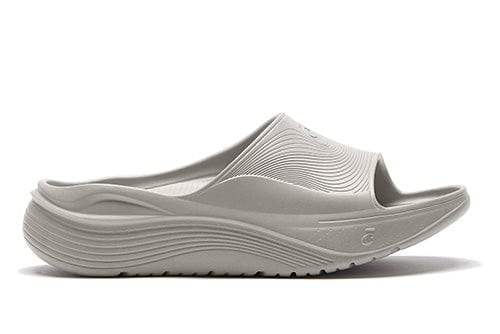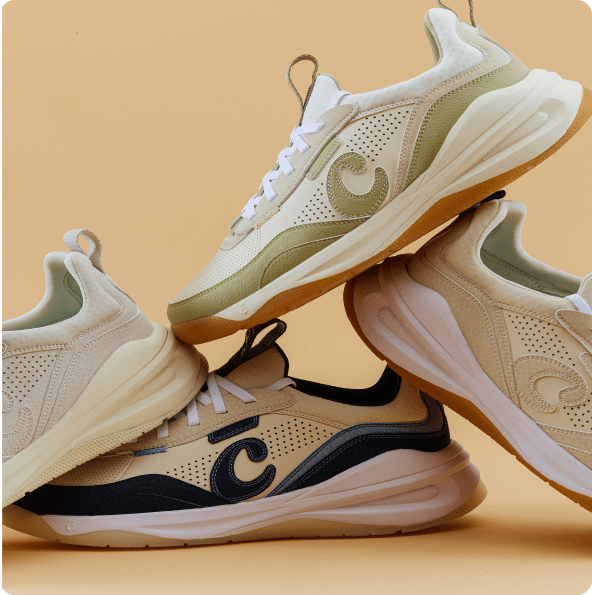Nursing Shoes vs. Running Shoes: 5 Key Differences Explained
Nursing Shoes vs. Running Shoes: 5 Key Differences Explained
If you’ve ever laced up your favorite running shoes before a hospital shift, you’re not alone. They’re comfy, familiar, and technically made for people on their feet. So, they should work for nurses, right?
Sort of.
Running shoes might feel great for short bursts of movement, but hospital floors are a whole different kind of marathon. Here’s what you should know before clocking in wearing your gym gear, and why nursing shoes built for healthcare workers are the better fit (literally).
Can I Wear Running Shoes as a Nurse?
Technically, yes. You can wear running shoes to work, but they’re not ideal.
Running shoes are designed for one specific job: propelling you forward efficiently and comfortably during short, high-impact activity. Nursing, on the other hand, is the opposite kind of workout. You’re standing still, pivoting side to side, crouching, then standing again for another hour.
That means what your feet need isn’t speed; it’s stamina.
Most running shoes feature lightweight mesh uppers and springy midsoles to absorb shock from the ground. They’re great for cardio but not for traction on slick tile, or for resisting coffee, sanitizer, or saline spills. And they’re definitely not built to survive 12-hour shifts in the same pair, day after day.
Nursing shoes are designed around endurance and environment, not running. They’re built for healthcare’s stop-and-go pace, for spills, for fatigue, and for the kind of pressure that comes from supporting both your body and everyone else’s.
5 Differences Between Nursing Shoes and Running Shoes
Running shoes might get you through a workout, but nursing shoes get you through a 12-hour shift. Here are the biggest differences that make one built for fitness, and the other built for real life on the floor.
1. Nursing Shoes Are Built for Endurance, Not Exercise
Running shoes are made for motion. Nursing shoes are made for longevity.
A runner’s stride is repetitive and short-term; a nurse’s shift is unpredictable and endless. That’s why nursing shoes use dual-density foam and pressure-distribution cushioning instead of the springy rebound you find in athletic sneakers.
For example, Clove’s SuperCush™ Comfort System was designed to keep you comfortable through hours of standing and pivoting, not just a quick 5K. Every step is supported evenly to reduce fatigue instead of fueling forward motion.
Running shoes excel at workouts. Nursing shoes excel at work.
2. Slip Resistance Keeps You Safer at Work
The biggest difference you won’t notice until it’s too late? Traction.
Running shoes grip pavement or gym flooring. Nursing shoes grip polished tile, disinfected hallways, and the occasional puddle of who-knows-what.
Every Clove nursing shoe is ASTM F3445 certified for slip resistance, meaning the outsole has been lab-tested to prevent slips and falls on wet or oily surfaces. Plus, they’re squeak-free (because no one needs an unintentional entrance soundtrack).
You might not think much about grip until you hit a slick spot during rounds. Then it’s all you’ll think about.
3. Easier to Clean
Here’s the thing about running shoes: they’re usually covered in mesh and foam, both of which love to soak up everything they shouldn’t. Fluids, sanitizer, coffee—it all seeps in.
Shoes for nurses, on the other hand, are made with easy-to-clean, bleach-wipe approved materials like Clarino™ vegan leather. A quick wipe and they’re good as new.
No scrubbing. No drying overnight. No walking around in soggy sneakers that smell like a venti latte. Healthcare is messy. Your shoes shouldn’t be.
4. Fluid Resistance Is Non-Negotiable
When your workplace involves IV bags, cleaning solutions, and unpredictable splashes, fluid resistance isn’t just a perk—it’s a requirement.
Running shoes are built to breathe, not to block. Nurse shoes (like Clove) are engineered to repel liquids while still letting your feet breathe comfortably. That means dry socks, clean feet, and one less thing to worry about when you’re focused on your patients.
If your shoes can’t handle a spill, they’re not made for the floor.
5. Durability and Design Go Hand in Hand
Running shoes are built for a few hundred miles of workouts—not months of constant standing, pacing, and cleaning. The midsoles flatten, the mesh frays, and eventually, they start to smell like regret.
Nursing shoes are designed for hundreds of shifts, not sprints. They maintain structure, support, and stability even after endless cleanings. Clove shoes add scratch-resistant uppers, odor-fighting insoles, and fluid-channeling outsoles that look as professional as they perform.
You shouldn’t have to replace your shoes as often as you replace your badge reel.
Shoes That Work Where You Do
Running shoes were made for finish lines. Nursing shoes were made for the long haul.
Clove Nursing & Healthcare Shoes are slip-resistant, easy to clean, fluid-resistant, and APMA-certified for foot health—because the people who spend their days on their feet deserve footwear that’s as resilient as they are.
When your shift doesn’t stop, your shoes shouldn’t either. Explore shoes for nurses and healthcare professionals that actually keep up.
